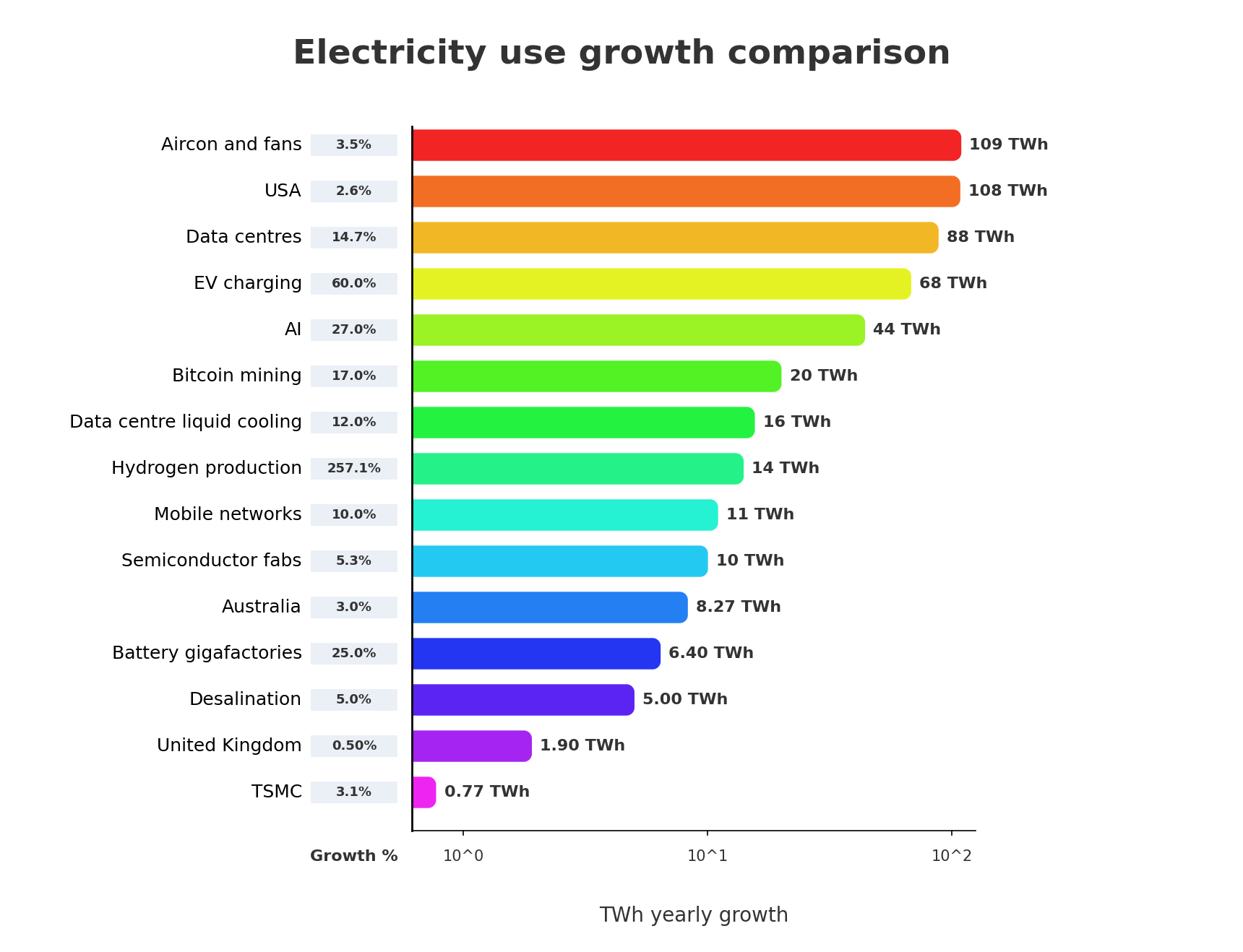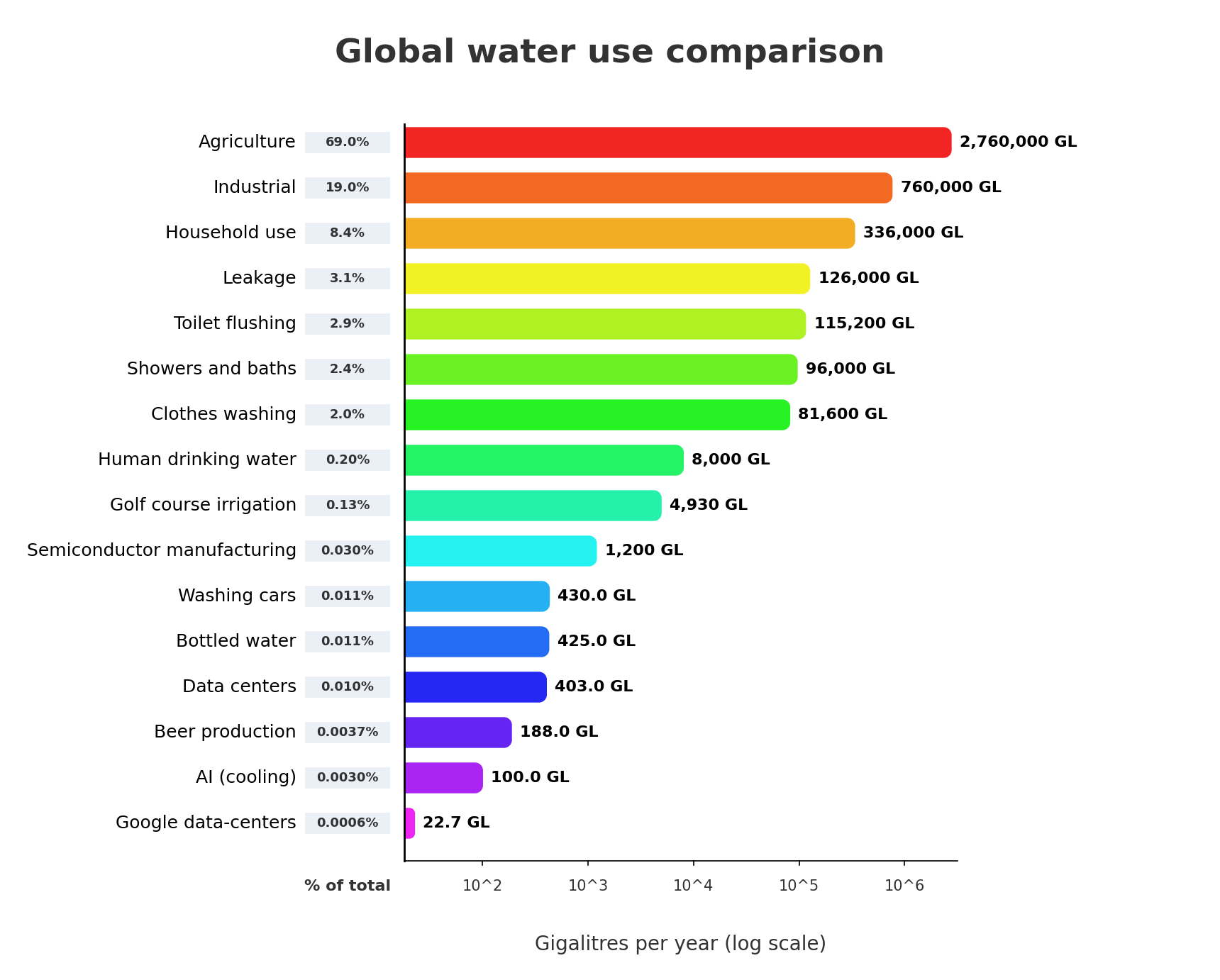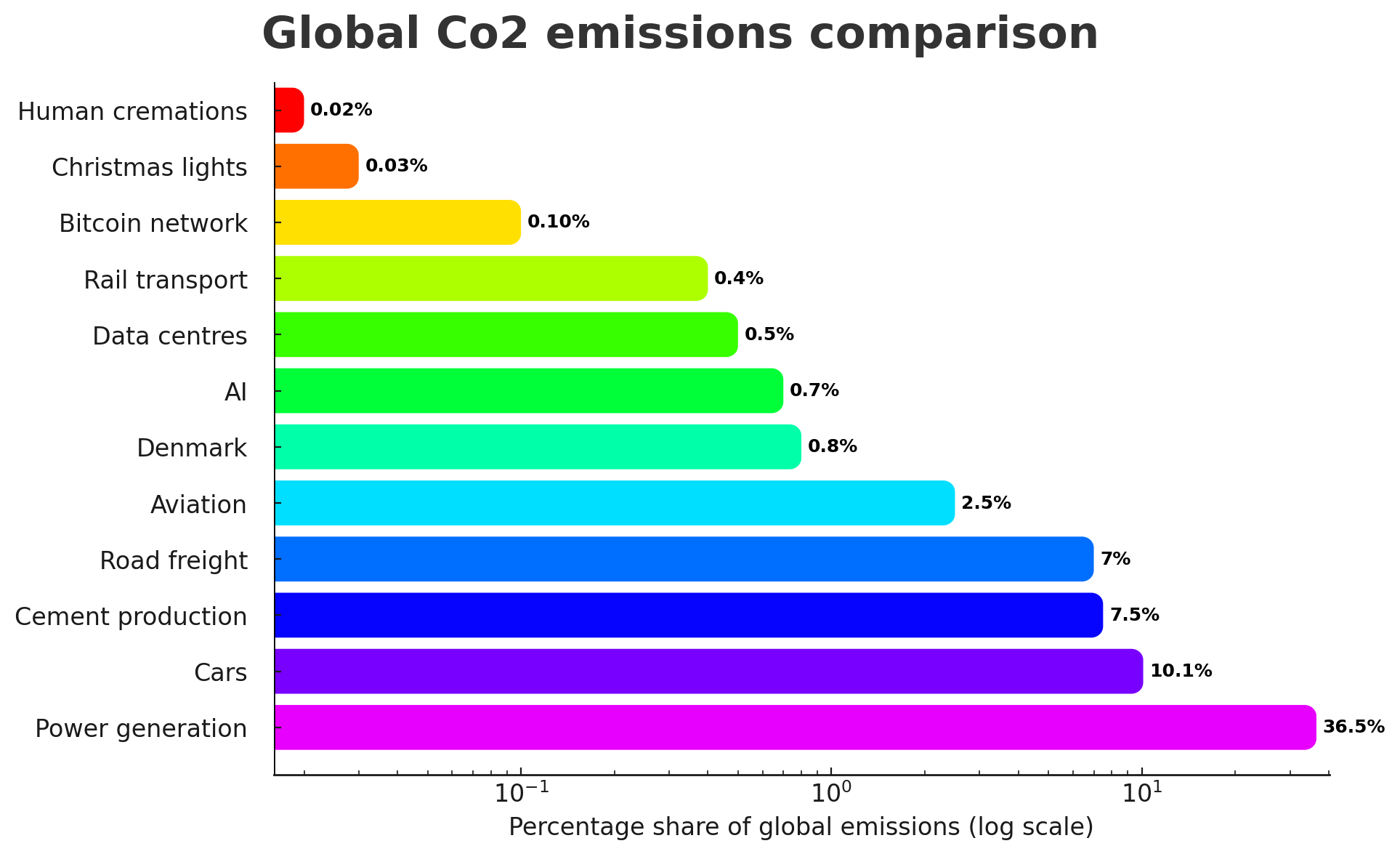Part one of the series “Keep Calm and Count the Kilowatts” showed that AI suggestions account for only a small portion of a person's daily energy consumption. But if OpenAI alone now processes over 2.5 billion requests per day from hundreds of millions of active users, what does energy consumption look like on a global scale?
The big picture
When looking at the overall context, articles often lose sight of how AI fits into global resource usage. Therefore, for ease of comparison, I have compiled annual energy consumption for a number of relevant and interesting applications and categories.
It is clear that AI represents only a small fraction of total electricity consumption at a personal or global level, and is surpassed by such modest technology as Wi-Fi. That's not to say it's not a lot of power: if Wi-Fi were a country, its power consumption would put it in the top 50.
AI is also experiencing a period of very rapid growth, which is normal for new transformative technologies. Take TVs, for example: by the 1980s, they used as much electricity as AI does today.
In fact, the electricity consumed per person by the average family watching TV in the 1980s was comparable to the power required for all the world's data centers today.
AI may be the new rising star, but it still accounts for only 10-20% of the 415 TWh of electricity consumed per year by data centers overall. More than 50% is for enterprise and government use (such as corporate cloud storage, online banking and digital government services), while video streaming takes up about 15%, and more than 10 trillion smartphone photos in the cloud (3 trillion of them are my dog in slightly different poses) makes up about 0.2%.
Overall growth isn't slowing either, and data center energy consumption is expected to double by the end of the decade, with much of the demand driven by artificial intelligence. It's hard to predict what the future holds, but even if artificial intelligence accounts for the majority of data center electricity consumption, it's still only a small portion of global usage.
Of course, AI is not the only technology that is experiencing massive growth right now, and power-hungry 5G cellular communications may soon catch up with AI. Electric vehicles are among the fastest growing new consumers of electricity and will easily be able to achieve 100 times more power than what AI uses today.

What about water and CO2 emissions?
Depending on how you look at it, the increased use of AI resources is both small and huge.
A full flush after reading this article can provide cooling for 10 requests per day for almost 5 years. One 500ml disposable bottle of water cools 2,000 requests, and the 100hl of water used to cool AI in data centers every year is about the same as it costs to water golf courses when it rains.

We shouldn't waste water, but data centers (and artificial intelligence) are low on the list of uses we should cut.
There's also a carbon footprint. 0.03 grams of carbon dioxide equivalent per tip, which is about the same amount you exhale with each breath. 10 tips a day is equal to the CO2 emissions of a candle at a one-year-old's birthday party or a car idling for less than a second.
Or, to use a more commonly understood unit of measurement, I estimate 100 million Zamboni tips per year, a quarter of which are in Canada.

Overall, annual equivalent emissions from AI energy use are about 0.07% of the global total. Looking at the big picture, this is a tiny share – about the same as the car sharing industry.
But 0.07% of a very, very large amount is still a lot of CO2, which puts AI on par with all of Denmark. It's not healthy.
Disproportional effects
The real environmental story of AI is not the tiny sip of power that your individual tip harnesses; it is the massive, concentrated impact of new data centers on the specific cities and ecosystems in which they are built.
But more on that in the third part Keep calm and count the kilowatts. row.
Not convinced that the Year of the Zamboni is a reliable measure of CO2 emissions? Drop your mittens and let's dance in the comments!
Artificial Intelligence Skeptics May Also Like
Artificial Intelligence lovers may also like
How we use AI
Here at TechRadar, our coverage is provided by contributors. AI helps with sourcing, research, fact checking, and spelling and grammar recommendations. The person still checks every figure, source and word before anything comes out. Sometimes we use it for important work, like adding dinosaurs to co-workers' photos. See our full list Page of the future and artificial intelligence.



:quality(85):upscale()/2025/12/15/996/n/1922195/1f7241cf694091eb4762b6.69255583_.png?w=150&resize=150,150&ssl=1)




